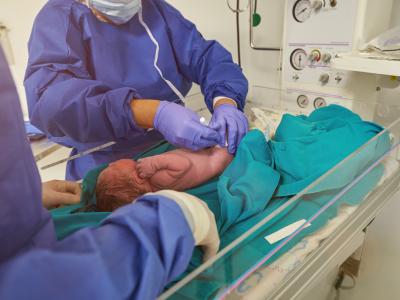
Scientists have identified a new coronavirus subgenus in a Brazilian bat with a feature that, as in the related SARS-CoV-2 virus, allows it to invade human cells, per a non–peer-reviewed study published on the preprint server bioRxiv.
The Pteronotus parnellii bat (Parnell's mustached bat) harbored the BRZ batCoV virus, which the researchers say has likely been silently circulating in Latin America for some time, given limited sampling in the region.
Bats are considered important hosts of betacoronaviruses such as SARS-CoV (which causes severe acute respiratory syndrome, or SARS), SARS-CoV-2 (COVID-19), and MERS-CoV (Middle East respiratory syndrome, or MERS). "The high diversity of viruses in bats therefore positions them as a key taxonomic group for zoonotic disease surveillance," the investigators wrote.
Difference of only 1 amino acid
The researchers, from Japan and Brazil, collected intestinal tissue samples from 70 bats from three locations from May to August 2019 and digitally studied the virus's genetic sequence. The process revealed a distinct subgenus with a functional furin cleavage site (FCS) on its spike protein and a unique amino acid sequence motif that differs from that of SARS-CoV-2 by only one amino acid.
Our study provides a broader understanding of the phylogenetic and functional diversity of bat coronaviruses as well as their zoonotic potential.
The discovery hints that the mutation isn't uncommon, the authors said. Indeed, FCS have been identified in the surface proteins of other RNA viruses.
"Comparative structural analysis identified other betacoronaviruses in bats with furin cleavage sites at the S1/S2 junction, suggesting that this region is a structurally permissive 'hotspot' for cleavage site incorporation," the study authors wrote. "Our study provides a broader understanding of the phylogenetic and functional diversity of bat coronaviruses as well as their zoonotic potential."
The results underscore the importance of RNA virus surveillance in South American bats and "highlight the importance of elucidating FCS acquisition events as a central molecular mechanism that shapes the pathogenicity and host range of these viruses," they concluded.
.jpg)











